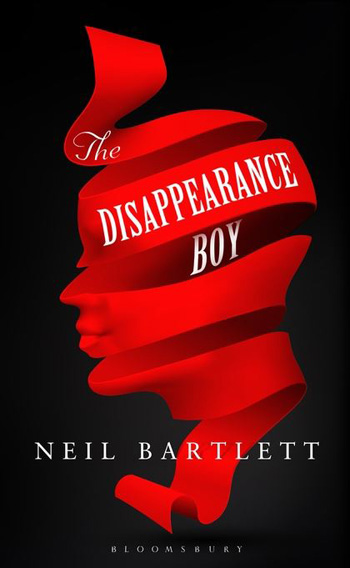 The Disappearance Boy
The Disappearance Boy
by Neil Bartlett
Published by Bloomsbury Circus
Published October 28, 2014
Fiction
288 pgs. • Find on Amazon.com
Reviewed by C. Todd White
December 26, 2014.
Neil Bartlett’s new novel, The Disappearance Boy, is the kind of book that bibliophiles live for—an artfully crafted volume where well-wrought words on cotton pages carve vibrant images in the mind, where characters we come to care for do brave things we both dread and admire.
This novel, set in England in spring of 1953, in the days prior to the coronation of Elizabeth II, is part coming-of-age and part twisted romance. The primary protagonist is Reggie Rainbow, a polio survivor who works for an illusionist, Mr. Brookes, to facilitate an act of disappearance whereby a woman is bound by red silk, confined in a mirror-lined box, spun about, and made to vanish only to reappear from off stage as fully transformed as Eliza Doolittle. The act, however, has been polished to the point of tedium when a new assistant enters into the scene: Pamela Rose, the catalyst for Reg’s transformation from boy to man—and for Mr. Brookes’ comeuppance.
Disappearance Boy is a story of deceivers and deceptions both feigned and real and of the stifling yet safe tedium of well-set routines. Though the book is set in the early 1950s, there is a Victorian feel to the story—perhaps due to the velvet top hats and smoke-laden overcoats, gothic-like forays into England’s dark alleyways, unspoken passions, and the stinging shame of illicit sex.
Reg, a crippled man in his 20s, has no comrade except for his employer and the phantom love of a mother he never met. As Brooke’s new assistant, Pam, teaches Reg not to be so fearful of love and to take a chance on passion, so Reg reminds Pam of the nobility of motherhood and the redemptive power of forgiveness.
The outlier in the narrative remains Mr. Brookes, the man who stands at the center of it all. The story, in effect, pivots on his elegant arrogance, over confidence in his compelling smile, and the agility of his lithe hands and their ability to misdirect perception. While not a bad man, Brookes is hardly a role model. It is to Bartlett’s credit that we feel any sympathy at all for him at the close of the book, yet we do.
The Disappearance Boy is a wonderfully crafted novel that compels the patient reader toward the final reveal. Once the smoke of the final act clears, all mirrors are aligned again toward truth, and a new order is set in place. The reader is left pondering the events of the story and the fate of the characters, haunted by the filmic realness of Bartlett’s prose.
© 2016 by The Tangent Group. All rights reserved.

